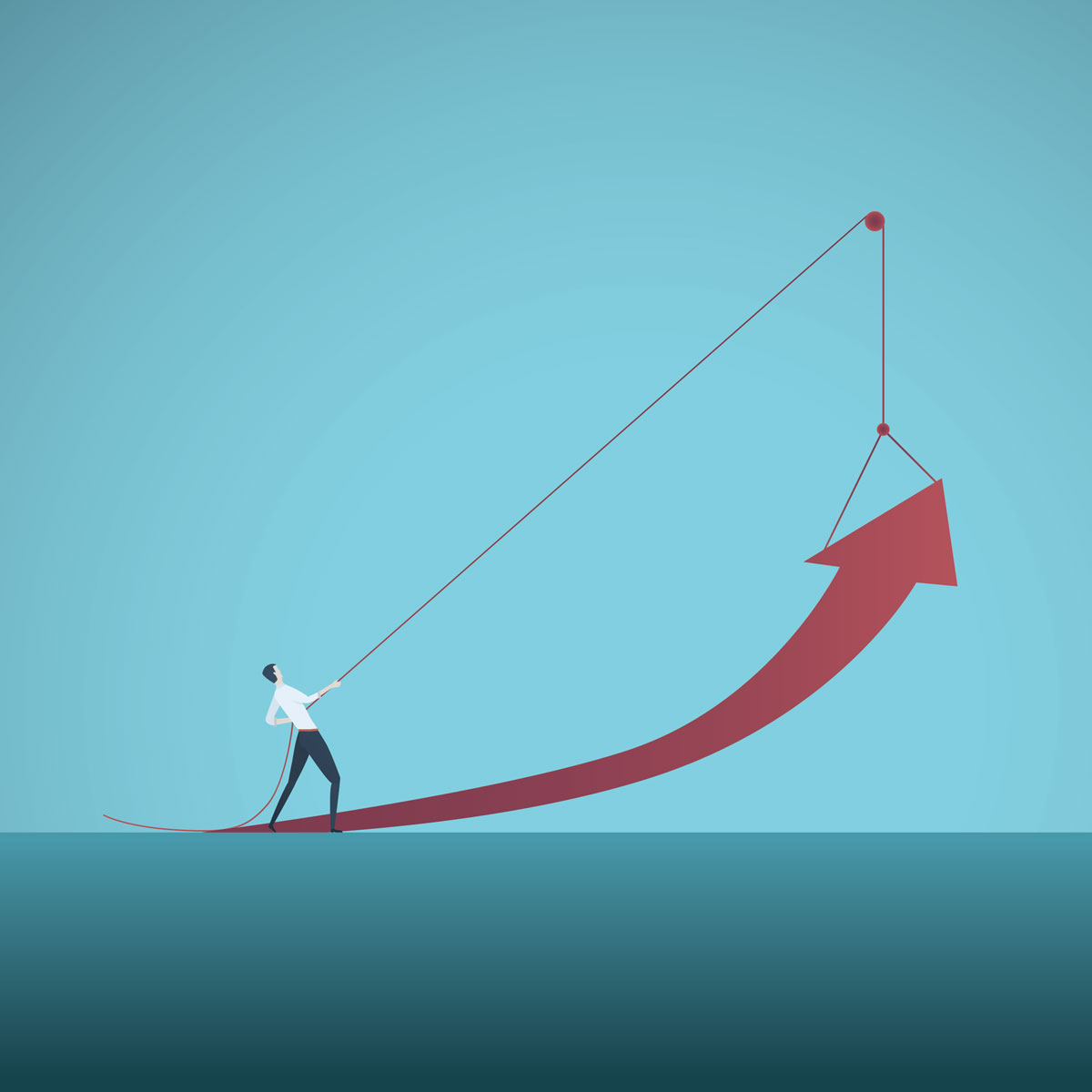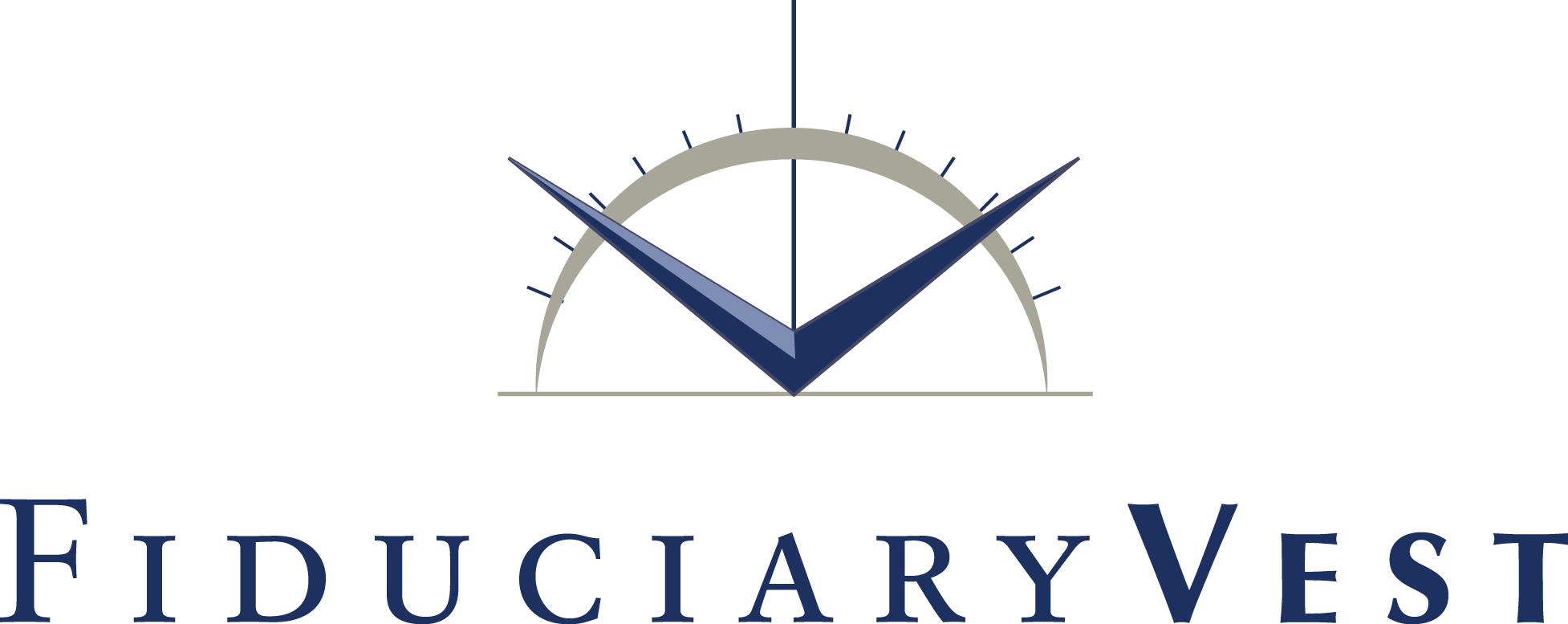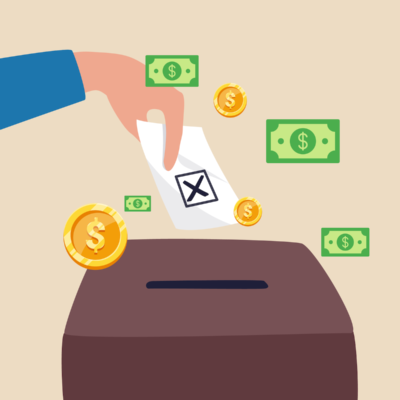
Two Months of Market Hell is in the Books…So, What’s Next?
Market Commentary April 2020
WE HAVE MORE TO FEAR THAN FEAR ITSELF
During February and March, equity markets have had their say about the Corona-plague that not only put tens of thousands in hospital beds, but also took, and will take many thousands of lives. The pandemic’s direct impact is devastating, but, in the span of a few weeks, government-ordered combat response tactics blew out most of our societal circuits and left nearly all of us confined to quarters. It’s as if, one day, the air outside our homes suddenly turned toxic.
All of that was tragic, unprecedented and, perhaps most significantly, it was and is deeply demoralizing. The who’s-infected/who’s-not mystery wraps a curtain of fear around those without (yet) diagnosed infection…. not only fear of death, but also of the unknown. The disease victims can be counted, but the further-reaching devastation is coming from the deep business recession caused by the shutdown of an intolerable level of American commerce.
Unlike 1974, 2001 and 2008, this 2020 lowest of the four low ebbs has quickly brought the US Congress and Federal Reserve Bank to fashion a Christmas tree of economic buffers and rescue packages, mostly implemented via lending schemes and debt-service postponements. Moreover, the same rescue sources have made clear that, if the initial measures prove insufficient, much more will be done. These programs’ costs are not counted in mere billions of dollars; the emergency measures are stated in trillions.
This paper is issued by an investment advisory firm, written without attempting to include medical conclusions. Although every published source of daily commentaries is centered on the pandemic illness’s various reported numbers, we will proffer pragmatic observations about the eventual US return to non-hysterical business conditions and market efficiency, in a time-context that is rational and, we hope, usable by our readers.
Preview: This paper’s point of view, nine months hence, pre-supposes a US economy that is restored, or is well into transition. Our underlying theme is: (a) We are not optimistic; we are realistic, and (b) Investing is entirely a futuristic commitment, based on rational assumptions.
MARKETS CONFRONT A VIRAL BOMB
Who can blame investment market-makers for their disorderly conduct which began in the middle of February? We all know that nothing spooks investment markets more than uncertainty. From the markets’ point of view, not much could be worse, except compound uncertainty. Today, markets are confronted with an unimaginable degree of uncertainty, set aflame by the exponential spread of a suddenly pandemic virus, initially delivered to the world via a spider web of air travelers and then passed along by those travelers’ contacts, and then by those contacts’ contacts… etc.
A pandemic is the disease version of a nuclear bomb…. its invisible trigger produces a chain explosion that multiplies among human beings at practically the speed of light. Indeed, the virus turned the world’s most prominent market trading post into a disorderly tangle of wires, within a couple of weeks. Humans unseen on its trading floor were reduced to anxiously awaiting a federal political process to craft, create and dispense trillions of borrowed dollars that will drown the virus’s doomsday shutdown of America’s businesses in a sea of capital loans, payroll underwritings and debt payment forbearances. Meanwhile, the Federal Reserve began to flood the nation’s economy with newly created money (on a Sunday night, no less), followed shortly by an open-ended commitment to keep the fire hose pouring until the flames are extinguished, or at least under control.
NYC: THE CRUCIAL CASE
Unfortunately for capital markets, the New York City area is, by far, the hottest of the global virus hotspots. The worst of the numbers, the bad news and the video views (think refrigerator trucks) are not only generated there, but are triple-magnified by the fact that the major investment bankers, trading centers, analysts and most of the markets’ human underpinnings live and work in New York City. In addition, the most influential, market television and newspaper commentators live there too. As March wore on, New York’s viral statistics flew past all other states and its numbers continued to multiply the counts from everywhere else in the world. New York’s governor has become the nation’s most prominent daily TV star with his mid-day program of statistical updates and opinion commentary. He explained that his state has many-fold the number of virus cases than others, because New York City is the global destination for travelers from everywhere. Whatever the reason for its virus target status, if the New York City/upper New Jersey area statistics were set aside (not possible, of course), the entire remainder of the US would be a much less threatening, more manageable virus situation.
BEWARE OF SUSPECT AND MEANINGLESS DECISION-DATA
From the beginning of coronavirus data in January, there have been two major sources of numbers that are faulty, when used for setting crucial expectations and devising plans…. conclusions that are materially affecting investors and traders in US securities markets: (1) If the number of completed virus tests is significantly behind the disease’s actual local progress, then all of the statistics are, at best, insufficient and, at worst, misinformation. In most localities, this deficiency is sadly prevalent and it’s not rapidly improving. (2) The Chinese government is increasingly believed to have been under-stating their data, from the git-go.
Twenty-first century securities traders do not maneuver without reliable data. But, in this viral-moment, their data needs are largely unfulfillable, which tends to create a pull-the-plug atmosphere among investors. The basic tools of investment analysis and decision making are, in effect, wiped out. Who can even guess, much less forecast a company’s rate of earnings generation for this year, or the next? Absent any guess of a company’s current earnings, who can begin to estimate a forward-looking “fair” price for its shares?
Crucial keys to extinguishing the deep business recession and looming fear are: (a) Businesses must each develop workable, short-run survival plans. (b) Unlike in 2008-9, the Federal Reserve and its Congressional cohorts must closely collaborate to fund an avalanche of survival techniques. Delivery of funds must be implemented rapidly and efficiently, via the national and local banking network. (c) The country must re-open most of its business doors soon, presumably after the new cases numbers decline. Near term business re-opening appears to be a necessity, not an option, in order to avoid an irreversible freezing up that might be called “dislocation atrophy”.
NEVER FORGET: THE STOCK MARKET IS A ‘FUTURE MACHINE’
Inquiring minds want to know….
- When will US securities markets once again “recover” to levels that are similar to early February 2020 (DOW= 29,102 on Feb 10)? Today, it’s 8,000 points (27.5%) below that level.
Rather than posing the widely discussed question above (i.e., a search for an unknown recovery point in time), we have arbitrarily selected a target date to consider. In this paper, year-end 2020 will serve as a canvas on which to paint a 2021 market expectation which is, after all, what WILL be the markets’ point of view, at that time.
The fundamental expectation that matters most in this exercise requires a straight-up answer to a question: Will the infection level and spread-rate of coronavirus in the US be waning substantially, well before December 31, 2020? (11 months after the virus’s US appearance).
- If the answer is “Yes”, then we can paint-in expectations for a 2021 economic rebound (or not) from the US’s budding economic depression.
- If the unlikely answer is “No”, even in the face of a massive medical treatment campaign, then that answer would predict compounding economic doom. To be taken seriously, that forecast would need to be supported by compelling evidence that the path of 2020 coronavirus is packing death statistics that will be brutally unique among the medical history of airborne and touch-contagious viruses.
As we have seen, a viral infection on a pandemic scale has delivered a crippling medical and psychological 1 sting which has spread exponentially in a few weeks. That initial phase is well along in the US, and because the fast-growing number of recovered individual infectees are expected to be immune, the virus should progressively starve, amid a fading supply of non-infected targets. That physical fact, combined with unprecedented, voluntary social distancing practices and aggressive, wartime governmental tactics can and should bring the US segment of the pandemic into a containment phase, followed by an increasingly tapering phase. The original viral location, Wuhan, China reported no new cases in that city of 11 million during the 5-day period from March 18 to 22 (if that data is reliable); that city’s total shutdown containment efforts began 8 to 9 weeks earlier. Even New York is now seeing indications of a peak. Key Question: If there had been no coronavirus, were there identifiable economic storm clouds on the broad horizon of American businesses and their bottom lines? The Russia/Saudi, self-induced oil-price crash would certainly be one cloud; that piece of disorder is clearly affecting securities markets. Was the rising size and scope of BBB and BB-rated corporate debt forming into a serious economic pothole, or worse? The answer will soon play out.
Our purpose of painting a year-end stock market scenario does not need to consider the next six months of largely garbage business results data. So, we can begin by (a) “writing off” the virus-laden 2nd and 3rd quarters and perhaps also the 4th, while paying attention to distilling any persistent trends that developed during that period, and (b) placing our scenario eggs in one basket… i.e., the expected corporate earnings and growth rates to be realized in 2021 and thereafter, based on the expected December 31, 2020 scenario. One favorable, likely development during the next quarter or two: corporations will make significant moves to tidy up their balance sheets, via writing down recorded assets that represent a drag on future earnings.
When 2020 is laid to rest, its infected, panicked health and financial numbers will be recorded, published, grumbled about and, politically exploited. Of course, 2020’s corporate earnings will reflect an unprecedented Pan-Business Shutdown and the coincident trashing of the delicate underpinnings of the US economy, but those super bad 2020 numbers will contribute little or nothing toward estimating how the market will price stocks at year-end.
Beginning now, we can be all but certain that 2021 has, or will soon appropriately become the markets’ focal point.
Before year-end, those forward earnings forecasts can likely be developed amid historically normal levels of uncertainty, primarily because of four very consequential, forward-looking reasons:
- Well before year-end 2020, the worldwide spread of virus is expected to have peaked and tapered significantly. To facilitate the data reflecting that result, American ingenuity is already nearing a quantum leap in virus testing speed and availability, the presently missing key to useful forecasting data. The virus’s rate of decline will likely show up first in the hotspots (largely attributable to the consequential benefits from the March/April social tourniquet that squelched the virus’s flow through its human lifeline). The overhanging specter of death that has so unnerved investors and the population at large will slowly subside to an emotionally manageable level by year-end.
- A multi-trillion-dollar federal rescue program will have been devised, unwrapped and implemented (no doubt with some mistakes and missteps); it is designed to build an escape-bridge that will dampen the deep personal and corporate financial stress created by the sudden curtailment of commerce, importantly including shutdowns of all sports and entertainment venues and disruption of nearly all travel.
- The US Federal Reserve has pledged to do whatever it takes (sound familiar?) to restore economic normalcy, which, tangentially, should help the recovery of other world economies that buy American goods and services. We can be certain it will mean rapid-fire creation and distribution of several trillion more US Dollars that never before existed. The resulting liquidity will calm the bond market and patch many holes in corporate earnings capacity.
- American business will COPE; it will facilitate and dispatch its return to normalcy.

DATA CONTEXT: Virus measurements and their meaningful ratios are heavily influenced by the number of diagnostic tests being administered (or not). There is evidence that overall US testing has been skimpy and, in some/many US states and regions, the processing lag between administered tests and the processing of test data may be creating important current (March 25) distortions of online data summaries
That said, consider the “Deaths” and “% Deaths” columns below. While the number of reported coronavirus deaths is presumably timely and accurate in nearly all measurement locations, the accuracy of deaths-to-total-cases is largely dependent upon variable local testing and reporting practices. If there is indeed material distortion of the % Deaths, the public’s depth of fear will largely be spawned by the numbers that show a high death rate. At this time, Italy and Spain are showing death rates which seem to indicate that they are on a different planet.
Statistics divided into age groupings show that the 65+ group accounts for about 80% of total deaths.
Compare and contrast coronavirus
with the most recent US influenza virus seasons…. the CDC reports: “The overall
burden of influenza for the 2017-2018 season [considered to be a ‘high
severity’ season] was an estimated 45 million influenza illnesses,
810,000 hospitalizations, resulting in 61,000 deaths,” [0.13% of
total flu illnesses]. (83% of total flu deaths were age 65+); comparable
statistics for the 2018-2019 season were 35.5 million flu illnesses,
490,600 hospitalizations, 34,200 deaths (0.9% of total, of which
75% were age 65+).
[1] The medical problem is of course primary, but the mental aspect is likely to gin-up powerful fears of an unseen disease, and now the economic desperation caused by sudden, swift and wholesale elimination of American jobs. The fear factor was first manifested very simply, via the sudden, astonishing nationwide hoarding of toilet paper; the driving motive for that was never supported by facts or relevance to anything that was wrought by coronavirus. Presumably most of the hoarded paper inventory is now languishing in attics and under beds, awaiting consumption many months from now.
Commentary
Commentary was prepared for clients and prospective clients of FiduciaryVest LLC. It may not be suitable for others, and should not be disseminated without written permission. FiduciaryVest does not make any representation or warranties as to the accuracy or merit of the discussion, analysis, or opinions contained in commentaries as a basis for investment decision making. Any comments or general market related observations are based on information available at the time of writing, are for informational purposes only, are not intended as individual or specific advice, may not represent the opinions of the entire firm and should not be relied upon as a basis for making investment decisions.
All information contained herein is believed to be correct, though complete accuracy cannot be guaranteed. This information is subject to change without notice as market conditions change, will not be updated for subsequent events or changes in facts or opinion, and is not intended to predict the performance of any manager, individual security, currency, market sector, or portfolio.
This information may concur or may conflict with activities of any clients’ underlying portfolio managers or with actions taken by individual clients or clients collectively of FiduciaryVest for a variety of reasons, including but not limited to differences between and among their investment objectives. Investors are advised to consult with their investment professional about their specific financial needs and goals before making any investment decisions.
Investment Risk
FiduciaryVest does not represent, warrant, or imply that the services or methods of analysis employed can or will predict future results, successfully identify market tops or bottoms, or insulate client portfolios from losses due to market corrections or declines. Investment risks involve but are not limited to the following: systematic risk, interest rate risk, inflation risk, currency risk, liquidity risk, geopolitical risk, management risk, and credit risk. In addition to general risks associated with investing, certain products also pose additional risks. This and other important information is contained in the product prospectus or offering materials.





